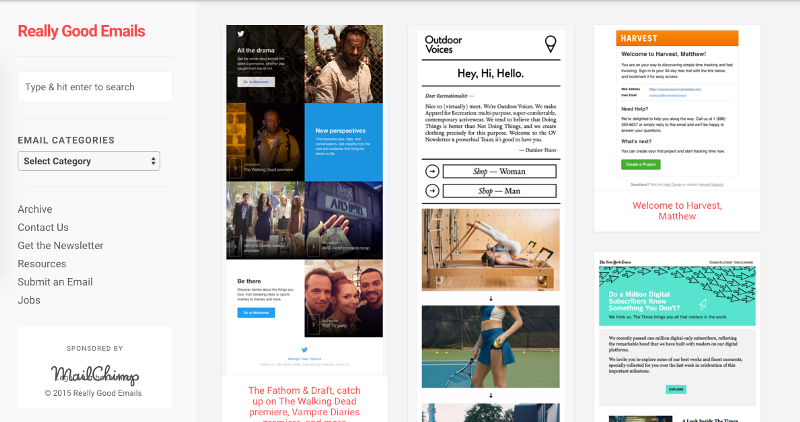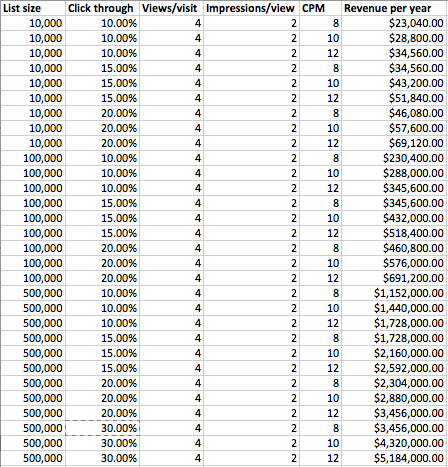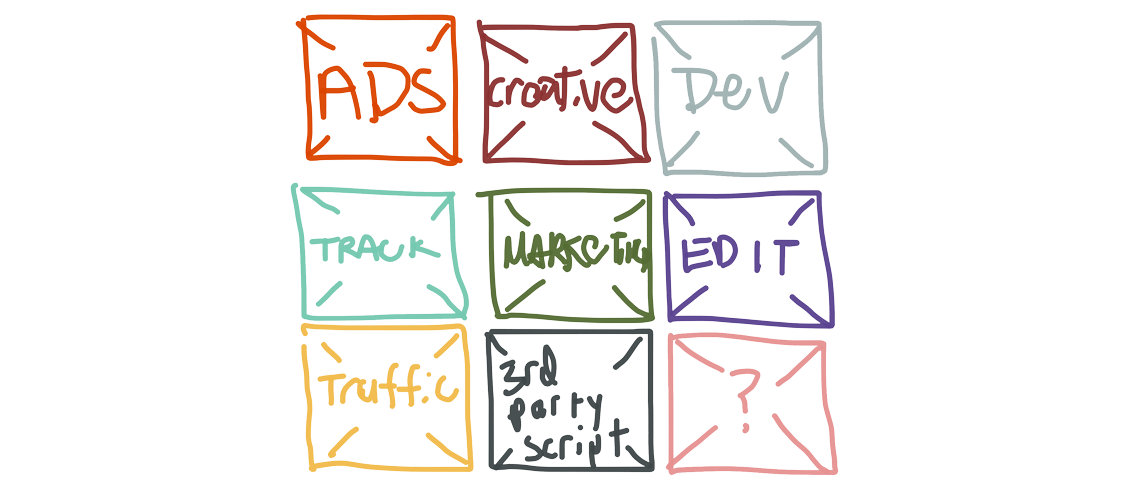Publishers are finding that the best way to access millennial audiences is through email. New email newsletters are drawing attention from media execs and celebrities and attracting corporate level ad partnerships. Publications are taking email newsletters promotion seriously, with prominent signup placements on every page.

Buzzfeed reported a 23% month-over-month rate of growth on traffic-to-site generated from newsletters. The New York Times boasted 14% growth over a 6-month period from February 2015, to August. The Transparency Market Report forecasted a 20% compounded annual growth rate for email market capacity from 2012 to 2018.
Big Media companies are missing a huge opportunity to reach loyal audiences through email. Email newsletter lists are growing at an exponential rate, but the methods for using them haven’t changed.
“There’s tremendous opportunity for marketers who perfect their email tactics” — Kristin Naragon, Adobe’s Director of Email Solutions
Dynamic channel
Email is treated as a one-track one-way broadcast channel. Layouts and content are statically created and sent out to entire email lists. Personalization and dynamic content is not yet a norm. Email has the potential to operate as a smart social channel where publications are able to personally connect with users. By not investing in technology or tools to make this possible, media companies are missing a huge opportunity.
“When it is read in the e-mail newsletter format, it’s so much cleaner, and the images and the words — it’s almost a throwback to reading magazines.” — Jessica Gross
Innovative brands
Readers love email as a medium to receive content online. Email has proved itself useful for innovative brands and companies. The internet admires niche email newsletters like Amy Webb’s technology writeup “Notes From The Near Future” and Melody Kramer’s “Sandbox”. Curated digests like The Daily Skimm or Hype Machine’s weekly “Stack” boast large open rates. Tech startups, such as Quibb and Nuzzel, have used email as their primary medium for distribution and growth. Calculated content production and circulation strategies have allowed massive growth and scale using email.

Social channel
“We’ve found that not only is email one of the top 5 or 6 referrers of traffic, but visitors from newsletters are some of the most engaged readers spending 3 minutes longer on the site than other channels.” — Dan Oshinsky, Director of Newsletters at BuzzFeed
Compared to other social networks
Each service has an ideal publishing time, appropriate technique for recirculating older content, and intricate engagement strategy. Twitter can have the same article posted multiple times a day. Facebook descriptions and titles are meticulously targeted at communities. Instagram crops are made irresistibly beautiful. In each case, there is a science.
Email is better than social platforms on a number of fronts. Email doesn’t fight opaque algorithms to surface, like Facebook. Emails aren’t buried in a user’s timeline, like Twitter. Email is prominently visible on every device a user may use. Email is recoverable through client search. Emails can be viewed over and over again.

Email user behavior and identifiable qualities should be used to optimize email pleasantness. The industry standard, as reported by Mailchimp, is 20–30% open rates. This signals a horrible “platform”. Similar reports state 1–3% open rates. This is even worse. That means out of 100 people who you sent an email to, approximately 25 people looked at it. Of those 25, it is still just one to two people who clicked on something. This is horrible. Email can perform much better.
Email campaigns that randomly segment email databases, for A/B tests on designs are missing the point. Email services only track the metrics around emails that are concerned with technical functionality. Dashboards report open rates, click-through, email driven entries, and bounce rates. There is so much more opportunity.
Once someone signs up to an email, you can find out a lot of things. You know the IP address of the person who signed up. That means, you can estimate where they are. That means, you know their time zone. That means, you shouldn’t send them emails in the middle of the night. Right?
Once they open their first email, you can also find out a lot of things. You know their IP address again, so you can verify your first assumption. You can also start a trend graph of when this user likes to open emails. That is what time of the day they should get the email, based on that time zone we discovered.
Personalizing based on usage
If they happen to click on something, then you have even more data. You could classify your links and content before sending the email, and begin identifying the user’s interests. If you have images, then you can start understanding the trends in image performance in relation to the user.
There is real value to users, beyond the creepy reality that comes with tracking. When publications are making quality content, that users are legitimately interested in, the distribution mechanics are important. This method for targeting could be used for sleazy marketing emails and spam, but thats not the focus.
Napkin math
Operating on basic assumptions, you can begin to estimate the potential financial benefit to a technically developed email strategy. Take the email newsletter list size, take the average site entries per email, multiply it by the ad impressions per visit, and estimate the cost per ad impression (CPM).
Using conservative numbers, we can estimate actual monetary value. Imagine a email newsletter of 100,000 users with a 10% click through rate. Assuming two page views per visit and two ads per page view (around industry average), you have 40,000 ad impressions generated a day. At a CPM of $5, thats $200 a day, or $6000 a month, or a bit more than $72,000 a year. The ad impression revenue alone is a significant sum that would manage costs of employee and tools. Add email sponsorships and the emails are even more valuable.

Big Media companies have email lists that are a factor of three to five times larger, around 300,000 to 500,000. The clickthrough rates are also much higher, closer to 13–20%, on well designed newsletters, as seen in Buzzfeed and the NYTimes. The CPM for larger brands are also much higher, from $5 up to $15, based on the audience. Assuming the new variables for Big Media, the $72,000 a year in revenue skyrockets to hundreds of thousands and millions.
Investment in developing email has an undeniable revenue opportunity for Big Media. Assuming a large organization, CPM will be static from year-to-year, but open rates can be optimized. If the vectors mentioned above are utilized, I believe existing open rates could be doubled. Beyond design and subject line optimizations, there are large-scale technology improvements that could make a difference.
Email is worth exploring.



